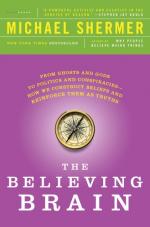|
This section contains 483 words (approx. 2 pages at 400 words per page) |

|
Chapter 4: Patternicity Summary and Analysis
Hearing a rustling in the bushes a man thinks a predator is about to pounce. However, he discovers it was the wind. This is an example of a Type I error in cognition or a false positive which is believing something is real when it is not. A Type II error in cognition is a false negative which is believing something is not real when it is: The man thought it was the wind but it was a predator. The brain is a belief engine which collects data and formulates patterns for our benefit and survival. Shermer coined the word "patternicity," a process to find patterns of meaningful as well as meaningless noise. Modern man is the descendent of those primates who had the most success in interpreting those patterns.
Science is the only arbiter when there is speculation...
(read more from the Chapter 4: Patternicity Summary)
|
This section contains 483 words (approx. 2 pages at 400 words per page) |

|




